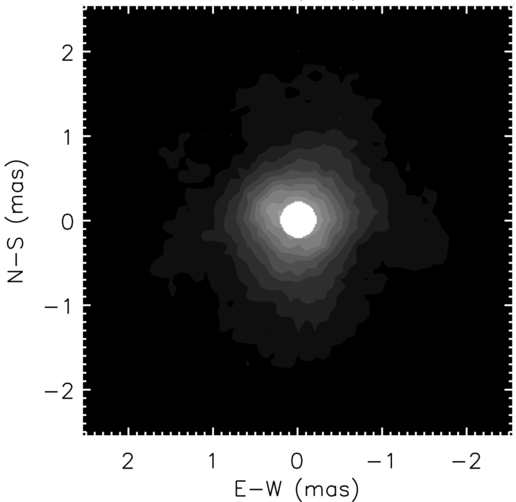
The CHARA image of the luminous blue variable star P Cygni shows that the spatial flux distribution is larger than expected for the stellar photosphere. A two-component model for the star (uniform disk) plus a halo (two-dimensional Gaussian) yields an excellent fit of the observations, and we suggest that the halo corresponds to flux emitted from the base of the stellar wind. This wind component contributes about 45% of the H-band flux and has an angular FWHM = 0.96 mas, compared to the predicted stellar diameter of 0.41 mas. The image above shows a MACIM reconstruction of the extended emission made assuming a stellar flux component with a uniform disk diameter of 0.41 mas that contributes 55% of the light. This reconstruction used the Gaussian component from our two-component model as the initial image and as a prior to define the probability for how the flux moves during the reconstruction process. The reconstructed image indicates a generally spherical geometry for the wind.
Reference:
The H-Band Emitting Region of the Luminous Blue Variable P Cygni: Spectrophotometry and Interferometry of the Wind (pdf)
Richardson, N. D., et al., 2013, Astrophysical Journal, 769, 118



